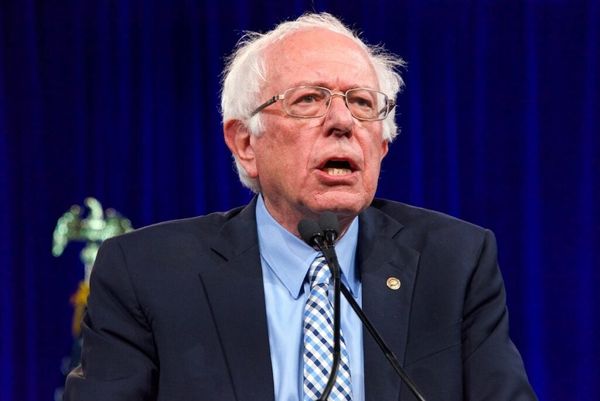
The British rock band Coldplay recently performed in India, with concerts held in Navi Mumbai and Ahmedabad. The DY Patil stadium in Navi Mumbai and the Narendra Modi stadium in Ahmedabad were packed to the rafters.
Now, when did rock music in general or British rock music in particular become so popular in India?
Well, Pink Floyd has been quite popular in engineering college hostels over the decades. Students who are likely to live reasonably comfortable lives thanks to their education would nevertheless blast the song We Don’t Need No Education over and over again.
In the 1990s, no college festival was complete without the local rock band on show having to play the Dutch band Gompie’s edit of Smokie’s Living Next Door to Alice, rechristened Who the Fuck is Alice.
And, of course, any Indian who thinks in English and was born before 1995 has, in all probability, heard of Bryan Adams’s Summer of ‘69 which, if you listen very carefully, especially towards the end, isn’t really a song about the summer of 1969.
Beyond this, a lot of those who think in English have their favourite rock stars and rock songs, like I love Bob Dylan and Bruce Springsteen. But rock music hasn’t ever taken off in India. It has had its small devoted following. And other than Bryan Adams, no singer has really come back to India several times and sold out concerts.
So, what explains the recent success of Coldplay? Are people who attended the concerts of the band in such huge numbers aware of the band’s music? Or, as many Instagram reels asked, rather sarcastically and judgementally, can these concert attendees even name three songs of the band?
A good chance is that they won’t be able to do so. So, then why attend the concert and spend good money?
I guess there are two reasons. First, Coldplay’s concerts are not just about their music. They are visually beautiful. And even if you are not aware of their music, the concert can be quite an enjoyable experience. (I haven’t attended any Coldplay concert but have been told so by people who have.) In simplistic terms, it’s like attending a very expensive sound and light show and having a ball doing the same.
Second, humans have always liked to project a successful and cool image of themselves and in the age of social media this need has only grown stronger. So, going to a Coldplay concert was never just about listening to and appreciating their music. It was more about the experience of being there and the ability to share it afterwards – about telling friends, family, and acquaintances, whether through social media or in conversation, that I was a part of that moment. It was about signalling to the world at large that I have arrived in life and feeling good about the same.
But where does real estate come in?
Dear reader, you must be wondering where real estate lies in all this. Was this another one of those clickbait headlines that you’ve fallen for?
Yes and no. Yes, you’ve been clickbaited. But – and this is important – there’s a reason for this headline. Indian real estate has been experiencing, for a while now, what I would like to call the Coldplay effect. Let me explain.
1) Like watching a Coldplay concert, a lot of real estate in India is bought to send out a signal: that I have arrived in life.
See, your mutual fund investments, your stock investments, or the humongous amount of money you have in bank deposits, or the fact that you are making shitloads of it in your job – none of these can really tell the world at large about how successful you are. These are all digital entries, and digital entries cannot be shown off. Which is why it’s important to turn this success into a physical manifestation.
And that physical manifestation are homes and flats, beyond the one you are already living in.
Let me give you a simple example here. Many stock market gurus make a much bigger news splash when they buy a large home than with all the successful stock market investments they have made over the years. This dynamic works at lower levels of success as well. Anyone who sees some success in India is itching to buy a house/flat as a signaling device. Of course, they also look at it as an investment (but more on that later).
Given that buying a flat is more of a signaling device, it is likely to be kept locked and not put on rent. Anyone who has bought a flat for signaling purposes doesn’t want to go through the hassle of putting the property out on rent and then dealing with the agents, the prospective tenants, and the ‘retired uncles’ running the housing societies in which the flat is located.
So, they keep it locked.
As G Hari Babu, president of the National Real Estate Development Council told The Indian Express in June 2024: “There are 1.14 crore vacant flats [in India].” And this is not a recent problem. In 2015, Anshuman Magazine, then chairman and managing director of CBRE South Asia, a real estate consultant, had said: “Despite a housing shortage, around 1.02 crore completed houses are also lying vacant across urban India.”
2) What does this mean? Given that homes have been built and kept locked, they make things difficult for those looking to rent flats to live in. This is one reason which has pushed up rents in recent years.
Of course, I am talking about this in a very broad and aggregate manner. And there can be many different reasons for home rents going up across the length and breadth of India.
Take the case of Central Mumbai, where I live. A lot of old buildings with fairly affordable rents (in Mumbai’s context) have been broken down in the last few years and are making way for high rises. This has essentially ensured that rents in the buildings that remain have gone up.
Also, the new buildings that are being built are being built for the super rich and hence, the rents in flats that are available in such buildings are way out of the league for most looking to rent.
In fact, on a side note, this is an impact of the huge income inequality that prevails in India. The super rich have a lot of money to throw around and, beyond a point, don’t know what to do with it. So, they keep buying more and more flats and other forms of property. In that sense, it’s a game of passing the parcel that they keep playing with each other. And builders, due to various reasons, also keep addressing only this small section of the market.
One side-effect of this is uncles, yes usually uncles, who are willing to rent out homes, coming up with many terms and conditions to rent – what you eat, who you meet, the god you believe or not believe in, whether you work from home or don’t, whether you are single or not, whether your parents live with you or not – everything is up for extremely close scrutiny.
The super rich have a lot of money to throw around and, beyond a point, don’t know what to do with it. So, they keep buying more and more flats and other forms of property. In that sense, it’s a game of passing the parcel that they keep playing with each other. And builders, due to various reasons, also keep addressing only this small section of the market.
The market for housing rental never really worked well, given that it was never easy to get tenants who overstayed their welcome to vacate. Now, for the lack of a better word, it’s screwed even further.
3) There is very little data out there when it comes to buying and selling prices of flats and homes in India. All the data that exists, formally as well as informally, is put out by those who have interests in real estate, from local level brokers to national level real estate consultants.
Also, the media highlights the biggest deals that happen at high prices leading to the average landlord thinking that if they hold on to what they own and sell later, they will get a higher price. This leads to there being a glut and a shortage at the same time, making things difficult for those who want to buy homes to live in.
As NAREDCO president Hari Babu said: “On the one hand, you are saying there is a shortage in the housing segment, and on the other, there are 1.14 crore vacant flats – it is a funny situation.”
4) Locked flats that are bought only for ‘investment’ purposes have many side-effects.
First, it has turned what is basically a physical asset into a financial one. Many people are buying flats not to live in them but to flip them. And given that these buyers are really not looking to make a regular income from this investment, they are just happy to wait till they get the price they think they should get.
In fact, another reason for real estate turning into a financial asset is the inability of most real estate investors to be able to calculate the real return made on investing in real estate. Typically, most investors hear some story of someone buying a flat at some price, one large number, and then selling it at a higher price, another larger number, and assuming that a high rate of return has been earned.
This does not take many factors into account while calculating returns. What about the interest paid on the home loan, if a home loan has been used to buy the flat? What about the property tax to be paid every year? What about the monthly maintenance charges? Or what about the general risk of owning real estate in India? The builder disappearing with your money? Or the fact that newer areas that people fancy can keep coming up? Or, to put it simply, what about the time value of money?
Other than the fact that the math required for such a calculation can be difficult, getting all the data required in one place to be able to make that calculation can also be quite a job.
Of course, all this is also a matter of mental conditioning as well: Mental bubbles are much more stronger than investment ones.
Second, in any functioning market, the demand side offers a price, the supply side offers a price, and gradually the demand side and the supply side agree on a price which is usually somewhere in between the prices each of them started with.
That dynamic seems to have totally broken down in the Indian context. Those who want to buy homes cannot really pay the prices that are being asked, or be able to buy the kind of homes that are being built and sold. This is also visible in the kind of home loan lending that banks have been carrying out.
Of course, this does not apply to the richie-rich part of the market, which has been driving Indian real estate in the last few years. (And which the business media keeps reporting on.)
Third, many of those who are buying homes to live in are getting financially stretched because of this. This has an impact on their savings, their other spending decisions and that, in turn, has an impact on the overall Indian economy. Of course, economists don’t like to get into such minor details.
Fourth, given the huge number of locked homes, newer homes are being built further and further away from the economic centres of Indian cities. This leads to higher commute times and a fall in the quality of living.
Many of those who are buying homes to live in are getting financially stretched because of this. This has an impact on their savings, their other spending decisions and that, in turn, has an impact on the overall Indian economy. Of course, economists don’t like to get into such minor details.
Fifth, the production of materials such as cement, glass, plastic, steel, and ceramics – essential for building homes – generates greenhouse gas emissions. Additionally, construction activities contribute to air pollution through dust. This is a huge unseen effect.
If people were living in such homes, there would at least be some justification to it. And chances are fewer newer homes would be built. Or, as Hari Babu put it, “I think it is a national crime to keep assets without utilisation.”
5) So, what’s the solution to this? It’s a complex problem and given that, there are no easy solutions. Of course, other than what I have talked about, there are many other reasons at work as well, including the presence of a massive amount of black money in the system which inevitably finds its way into real estate. And once this black money is there, it is likely to stay there, and thus perpetuates itself. (How to tackle that is a different book for a different day.)
One solution that I have talked about extensively over the years is doing away with the lower tax rates at which capital gains made from investing in real estate are taxed. Over the last few years, the government has done some work on this front, but capital gains from real estate are still largely taxed at rates lower than the marginal rates of tax on salaried or business income or interest income. This is a dichotomy that needs to be resolved to help those youngsters entering the formal workforce right now or even those who have entered the workforce in the last 10-15 years, for them to be able to buy a home of their own and live fulfilling lives like they see it.
Finally, the government shouldn’t be incentivising people to buy homes and keep them locked.
Vivek Kaul is the author of Bad Money.
Small teams can do great things. All it takes is a subscription. Subscribe now and power Newslaundry’s work.
Newslaundry is a reader-supported, ad-free, independent news outlet based out of New Delhi. Support their journalism, here.







